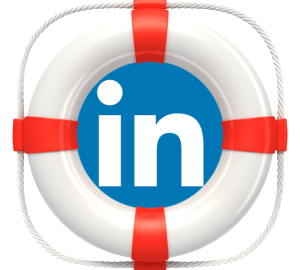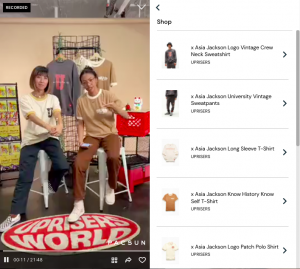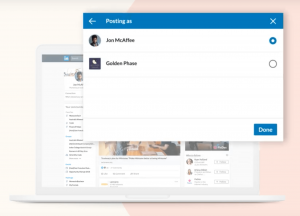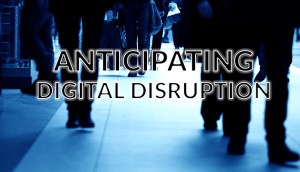 Almost six years ago, practically on a whim, I created a LinkedIn group. My vaguely-defined goal was to create a community of people who shared my interest in the applications and implications of social technologies in organizations. Throughout the remainder of 2009, in addition to growing my own group, I was also an active participant in several other related groups that helped me learn more than I could possibly imagine. For years I belonged to and participated in dozens of groups through which I not only continued to learn, but also expanded my professional network and established myself as someone with valuable Digital Era ideas and insights to share.
Almost six years ago, practically on a whim, I created a LinkedIn group. My vaguely-defined goal was to create a community of people who shared my interest in the applications and implications of social technologies in organizations. Throughout the remainder of 2009, in addition to growing my own group, I was also an active participant in several other related groups that helped me learn more than I could possibly imagine. For years I belonged to and participated in dozens of groups through which I not only continued to learn, but also expanded my professional network and established myself as someone with valuable Digital Era ideas and insights to share.
The first LinkedIn group I created – now called Social Media and Digital Technology: Opportunities and Challenges – has grown steadily (and organically) over the years. At 4400 members it’s far from huge, but it continues to attract new members and benefits from the contributions of people around the globe. I still learn from it every day, and I’m hyper vigilant about ensuring the content quality is top-notch and spam-free.
I also still contribute to other groups on LinkedIn, primarily by sharing articles I’ve written, I but don’t find them to be the great source of learning and dialogue they once were. I miss that.
I’m not sure exactly when the heyday ended, but I think most people today would agree LinkedIn groups don’t offer as much unique value as they could – or should. There are a number of reasons for this, including:
- There are many other things competing for the attention of time-starved professionals – including other offerings from LinkedIn itself (e.g., Pulse, SlideShare, published posts) that to some extent cannibalize the groups feature.
- LinkedIn has “tweaked” the feature numerous times over the years, making several controversial changes (e.g., site-wide moderation, eliminating “news” as a group posting option) that have alienated, confused, and frustrated both group managers and users.
- The barriers to starting a group are so low that literally millions of them exist (over 2 million in fact). Many of them are tiny, poor quality, and/or defunct.
- Many (most?) groups are poorly managed, and many individuals either don’t know how to be good group participants (or worse, in the case of spammers, don’t care).
I believe there’s still a lot of gold to be found in LinkedIn groups, but there’s also TONS of dirt! And digging through all that dirt to get to the precious nuggets can be aggravating and time consuming. For many people, in fact, the potential rewards are not worth the effort. Given the reputation they’ve developed for poor content quality, spammers who seem to have no respect for other group members (or themselves?), the overwhelming volume of information, and the lack of substantive dialogue, many people have tuned LinkedIn groups out, sacrificing the good because of the bad.
Update: LinkedIn has rolled out changes to the groups feature. See the post script for my thoughts on these enhancements.
Saving LinkedIn Groups: Recommendations for LinkedIn
Can LinkedIn groups be saved? Maybe. Much of that will depend on group managers and individual members – and I’ll share suggestions for each in future articles. For now, I’d like to focus on the things LinkedIn itself can do to enhance their usefulness and value. Here are some of my recommendations.
Purge defunct groups. With all their computer power and sophisticated algorithms, LinkedIn should be able to identify groups that have gone dormant and/or been abandoned. After reaching out to the group managers and giving them a chance to save their groups, they could then delete the groups that no longer serve a purpose.
Separate News and Discussion items again. Managers have different goals for their groups. Some want every item to be intended to initiate dialogue, whereas others (like me) encourage people to share news items as well. Many moons ago, the two were separate, but LinkedIn decided to merge them into a single function. Separating them and allowing managers to control the functionality of each, as they do now for Promotions and Jobs, would not only untangle the two types of content, but would also create better visibility – especially for the Discussion items. In a group where lots of content is shared, Discussions can sometimes get lost in a steady stream of News. Having separate streams accommodates the different flow rates and creates better opportunities for Discussion items to engage members. It also enables managers who want to prevent the sharing of links to disable the News function.
On a related note, LinkedIn should change the posting template and their bookmarklet so that people sharing news items and other links are not forced to type a title. The auto-populated title from the item being posted should be sufficient.
One more related note: Allow people to post the urls for pdfs. Right now, they don’t render well at all, which effectively means they can’t be shared. Few people will make the extra effort to reformat these kinds of posts so they make sense to others.
Fix the bookmarklet’s functionality. Speaking of the LinkedIn bookmarklet… From a groups perspective there are two key ways it can be improved. First, there doesn’t seem to be a way to simultaneously post an item as both a status update and to one or more groups. When you try to do both, only the group post goes through.
It would also be helpful if people could use the bookmarklet to post promotions and jobs so those kinds of links don’t automatically post to the Discussions section, where they don’t belong.
And though it doesn’t specifically pertain to groups, it would be great if the bookmarklet would also enable folks to post to the company pages they have administration rights for.
Get rid of Manager’s Choice and change the feed on the main group page. Speaking of Manager’s Choice, I think it should be eliminated. There’s no longer a designated Manager’s Choice section in the right sidebar (instead, the access is buried under the Search tab), but these items still rotate through the banner at the top of the main group page. It’s kind of a pain to manage that section, and I’m not sure it adds much value anyway. I think it might be more effective to have “popular posts” rotate through the banner element, and let the main feed include a straight reverse chronological listing of the latest contributions.
Add an Events tab. Groups are a great place to share relevant events, but they don’t really belong in the Discussion/News stream. Although LinkedIn has a separate section for Promotions, it’s not really a good way to share event information, primarily because Promotion items don’t show up in group email notifications. To keep events from cluttering up the Discussion/News feed, I tried creating a Manager’s Choice item for Events, but most group members were either unaware of it or forgot to use it. With a separate Events section, it would be clear where people should share news and links about upcoming webinars, conferences, workshops, etc.
Allow for automatic purging of Promotions. I believe job postings are automatically deleted after 14 days, and I think it would be great to have a similar capability for promotional postings. These could occur automatically after a certain period of time has elapsed, or they could be purged based on a timeframe specified by a group manager. Either option eliminates the need for manual deletion and keeps that section lean.
Ping managers when there are requests to join. For groups that require approval to join, it would be great to have an (optional) email notification for pending requests, as well as a flag on the members tab indicating there are people who would like to be in the group (like the flag used for posted items that need to be managed). With the current design, a manager has to click on the Manage tab and then click on Requests to Join to see if anyone is waiting to be added.
Managers should also be pinged whenever someone adds content to a group, including items requiring moderation. There is presumably a group setting that enables users to elect to be notified whenever an item is posted, but it doesn’t appear to be working. LinkedIn can facilitate good group management by reminding group managers when there are items requiring their attention.
Offer different alternatives for displaying groups on LinkedIn profiles. I used to like displaying group memberships on my LinkedIn profile, but it added a lot of unnecessary length so I eliminated all but the one I manage. I’d love to be able to highlight a few, with a link to a separate page with a complete list. In a related vein, Victoria Ipri once suggested: If it’s a feather in one’s cap to found/manage groups, why is there no place on the profile to mention this? That’s an excellent question!
Your Thoughts?
As always, I welcome your feedback. Do you agree with my recommendations? What other enhancements would you like to see to improve the quality and value of the LinkedIn groups feature?
Post Script
Unbeknownst to me when I wrote this piece, LinkedIn was in the process of rolling out changes to the groups feature. Here are my thoughts on the changes they highlighted for group managers:
- I’m glad they changed the Manager’s Choice functionality, primarily because it effectively enabled me to get rid of it altogether. Once less thing to have to fuss with!
- Getting rid of the cover image and carousel is a nice streamlining enhancement as well.
- The automatic filtering of posts into Promotions and Jobs reminded me that that functionality doesn’t work very well. I’ve often found good discussions have been automatically moved to Promotions, and I’m not always successful at moving them back to the Discussions section. LinkedIn needs to give this more attention.
- I’m neutral about the automatic removal of posts reported as spam. I almost never have group members report that content from others is inappropriate. But then again, I’m hyper vigilant about maintaining the quality of my group’s content!
I’m generally neutral about the changes highlighted for group members; however, as a group manager I wish the Group Stats had been retained. That was useful information.
This piece originally appeared on The Denovati Group’s website.
(238)
Report Post









